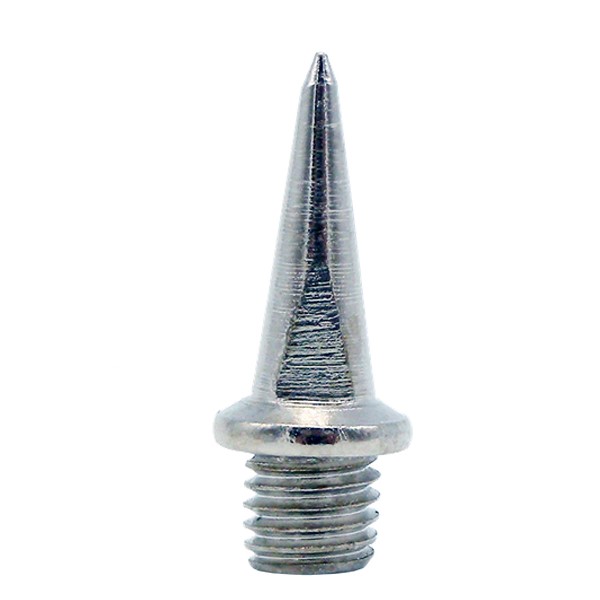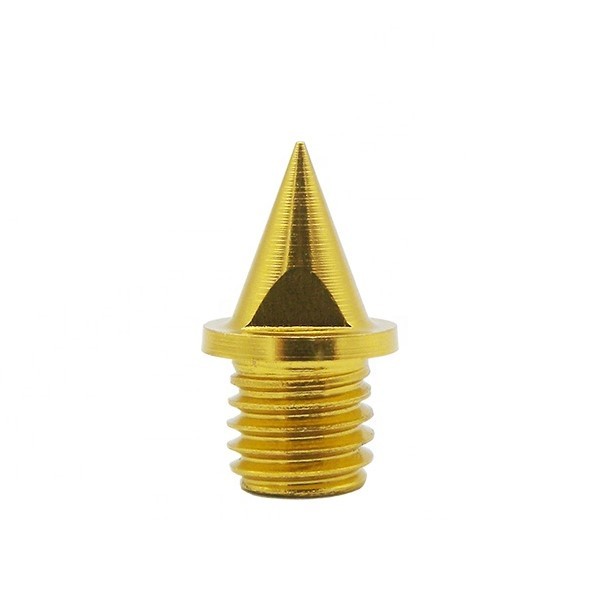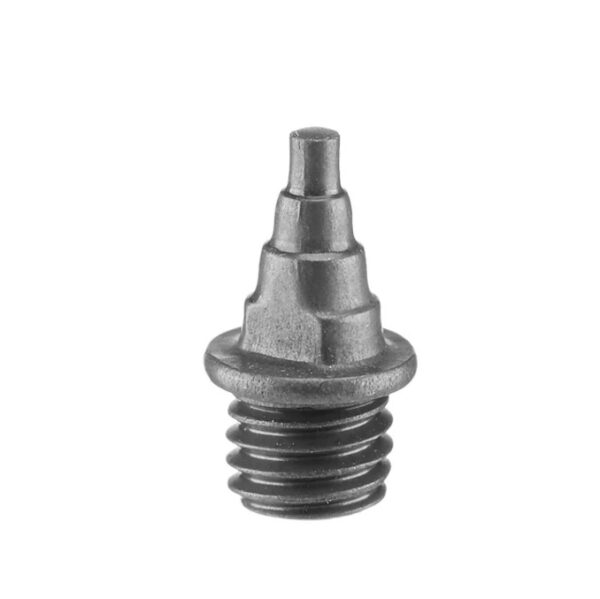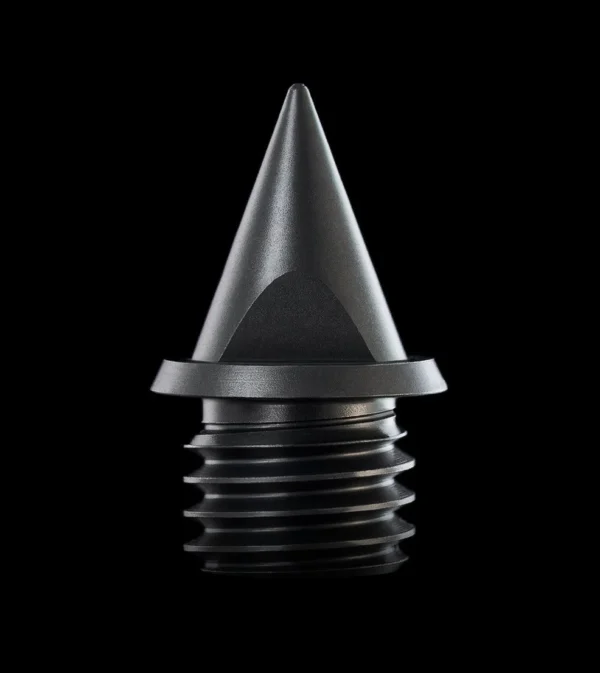They are a fundamental part of every athlete’s kit — but have you ever stopped to wonder how the humble athletics spike came to be? The history is a fascinating story of craftsmanship, rivalry, and innovation stretching back more than 170 years.
Origins: The 1850s
Spikes first appeared in the 1850s, when they were little more than heavy leather shoes with long nails hammered through the soles. They provided extra grip on the dirt and cinder tracks of the day — crude but effective.
By the 1890s, the first commercially available spiked shoes were being produced by Joseph William Foster, who would go on to form the company Reebok. Early improvements replaced heavy leathers with lighter kangaroo hide, setting the tone for more than a century of innovation aimed at one thing: speed.
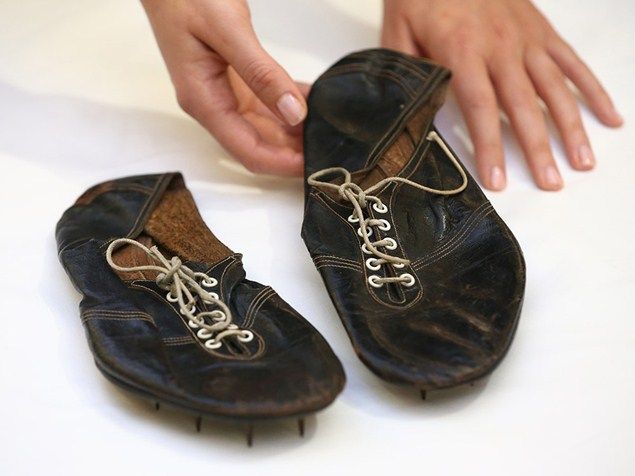
Adidas, Puma and the Rise of the Modern Spike
In the early 20th century, German cobbler Adolf “Adi” Dassler refined the design of spiked shoes, moving from leather to canvas and rubber, and tailoring different shoes to specific events. His shoes gained worldwide attention when Jesse Owens wore them to win four gold medals at the 1936 Berlin Olympics. The spikes of the era resemble the grass spikes we still have today.
After World War II, Dassler founded Adidas — a contraction of his name Adidas Dasler —and his brother Rudi, following a bitter split, formed Puma. Their rivalry fuelled a golden age of footwear innovation that still shapes athletics today.
Grass Spikes 15mm
These 15mm Grass replacement spikes are built for powerful adult sprinters training or racing on grass tracks. Ideal for high-performance and pro events like the Stawell Gift where extra grip is essential.
An Australian connection: Hope Sweeney’s kangaroo hide spikes
In Australia custom made spikes made from kangaroo hide served the needs of Australia’s top athletes through the 1940s, 50s and 60s. Made by Melbourne shoemaker Hope Sweeney, they were made with cowhide soles, kangaroo skin uppers, and permanent steel spikes. Sweeney would personally measure the athlete’s feet and draw a careful outline, so that the shoe was a precise fit. This eliminated any slippage between foot and shoe during a sprint but were so tight that they often needed talcum powder to be applied to feet as a lubricant to get into the shoe, and could only be endured for the period of the race.
The long fixed spikes were suited to racing on grass, but proved problematic when athletes raced abroad on hard cinder tracks. “After a couple of sessions our shins were so sore we could hardly walk,” Marjorie Jackson recalled of racing in Europe ahead of the 1952 Helsinki Olympics.
The Brush Spike Controversy
By 1968, athletics tracks were no longer made of cinders — the Mexico City Olympics introduced synthetic surfaces, and designers began re-thinking what spikes were supposed to do. Puma’s radical “brush spike” replaced the traditional 6-spike layout with 68 tiny needles designed for superior grip, with athletes noting significant differences when running around bends.
When John Carlos ran 19.92 seconds for 200 m at the 1968 US Olympic Trials in Echo Summit and Vince Matthews clocked 44.4 seconds for 400 m a fortnight prior to the Games, both we wearing the new design. Both were faster than the existing world records, but the performances were rejected by the IAAF. Adidas had lobbied to have brush spikes banned, claiming they damaged the new synthetic tracks — and succeeded. Only 500 pairs were ever made, and the brush spike entered history as one of the sport’s great controversies.
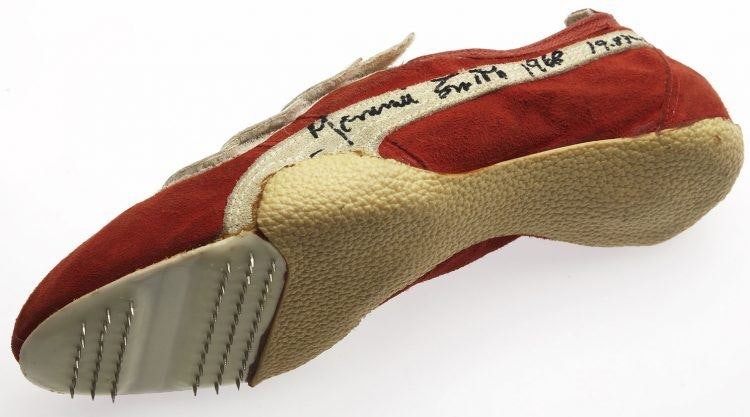
IAAF Scandal
Was the IAAF decision evidence-based? Or something else? Puma alleges that corrupt payments were made by adidas to IAAF officials to change the rules so that shoes could have no more than six spikes. However, an alternative version of events suggests that IAAF officials may have instead been blackmailed. The full truth of the matter may never truly be known…
Only 500 pairs of brush spikes were ever manufactured and whatever the truth of the decision making process behind their evaluation and ban, they quickly disappeared. With improvements in manufacturing, hard plastic protrusions, in addition to metal spikes, became common on the spike plates of modern shoes. The standard 6mm or 7mm pyramid spike became the norm for use on synthetic tracks, made of steel.
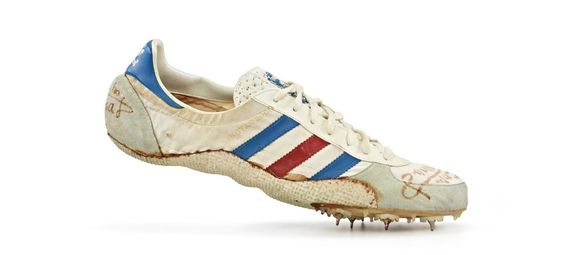
The Lightweight Evolution
Spiked shoes have continually become lighter in weight over time. Generally this has been through the use of lighter fabrics, mesh and foams for the shoe design. Other innovation has been more incremental and not universally adopted, such as lightweight carbon steel, and then, ceramic spikes.
Gold Carbon Lite Spikes – Pyramid 6mm
Gold Carbon Lite Pyramid Spikes 6mm are ultra-lightweight replacement spikes designed for peak performance on synthetic tracks. Made from carbon steel alloy, they’re 66% lighter than standard steel spikes—perfect for competition day.
One landmark innovation arrived in 1999 with the introduction of Omni-Lite spikes: the world’s first lightweight ceramic composite replacement spikes. Combined with a compression tier design that sought to optimise the energy return on Mondo track surfaces, these spikes continued to be developed in the United States under a patent that expired in 2021. OmniLite’s design reduced spike weight by up to 66 % compared with steel, giving athletes a psychological and physical edge. They remain a popular choice today, albeit with a far shorter lifespan than steel spikes, due to the rate that the softer than steel ceramic material wears at.
Omni-Lite Christmas Tree Spikes 7mm
Omni-Lite Christmas Tree Spikes 7mm are ultra-light replacement spikes made from a ceramic composite. Ideal for sprinters, middle-distance runners, and field event athletes chasing every performance edge on synthetic tracks.
The Carbon Plate Era
More recently, the emergence of spikes with carbon fibre plates and thicker soles for spiked shoes, such as Vaporfly distance running shoes that started a revolution across all brands, has led to significant performance improvements for athletes. This has particularly been the case in middle distance and distance events. As a result, World Athletics (the new name for the IAAF since 2019) introduced new rules relating to the height of the soles for spikes in track events.

All major brands now have adopted higher ‘stack heights’ in their spikes, as well as carbon plates that assist with greater energy return. Some brands have even experimented with ‘spikeless spikes’ such as the Asics Metaspeed LD.
Titanium and the Future of Spikes
While most spikes still use replaceable steel or ceramic tips, the newest generation of elite spikes has gone in a different direction. Some carbon-plated models now feature non-replaceable titanium spikes — a move toward ultimate weight reduction and precision integration between the plate and the spike element itself, in a durable design.
Titanium’s unique combination of extreme strength and minimal weight makes it ideal for this purpose. Capable of withstanding immense stress while remaining lighter than steel or ceramic, it represents the cutting edge of performance technology.
For traditionalists and competitors alike, replaceable titanium spikes are now becoming available — offering the same aerospace-grade advantages without needing a new pair of shoes for every season.
Spike Types and Surfaces
World Athletics rules still limit shoes to a maximum of 11 spikes per shoe — a legacy of the brush spike era. The most common styles include:
- Pyramid Spikes – the classic all-rounder for most track events.
- Christmas Tree (Compression Tier) – designed to grip synthetic surfaces while minimising track damage.
- Needle Spikes – sharper, but often banned on new track surfaces.
6 mm and 7 mm spikes are standard on synthetic tracks, while longer spikes (9–15 mm) are used for grass or cross-country conditions.
The Next Chapter: Titanium AeroSpikes Pre-Sale
The evolution continues with Aerospikes — precision-engineered titanium 6 mm spikes crafted from aerospace-grade alloy. Combining the unparalleled strength-to-weight ratio of titanium with advanced hollow design, they deliver performance efficiency that no other material can match.
Aerospikes are available exclusively for Australian athletes via Spikes.au.
For athletes chasing fractions of a second, the future is titanium.
Titanium Track and Field Spikes – 6mm
Precision-engineered 6 mm titanium track and field spikes — ultra-light, aerospace-strong, and available exclusively in Australia. Save and get quicker than ordering direct from the UK (UK retail $41.50+). One pack contains 16 spikes.
In stock
Estimated delivery by Friday 12 December
Which spike style is best?
The style of spike used by athletes is very much a matter of personal preference. However, there are some common preferences across different event types. We sell a wide range of athletics spikes to suit all athletes and surfaces.


